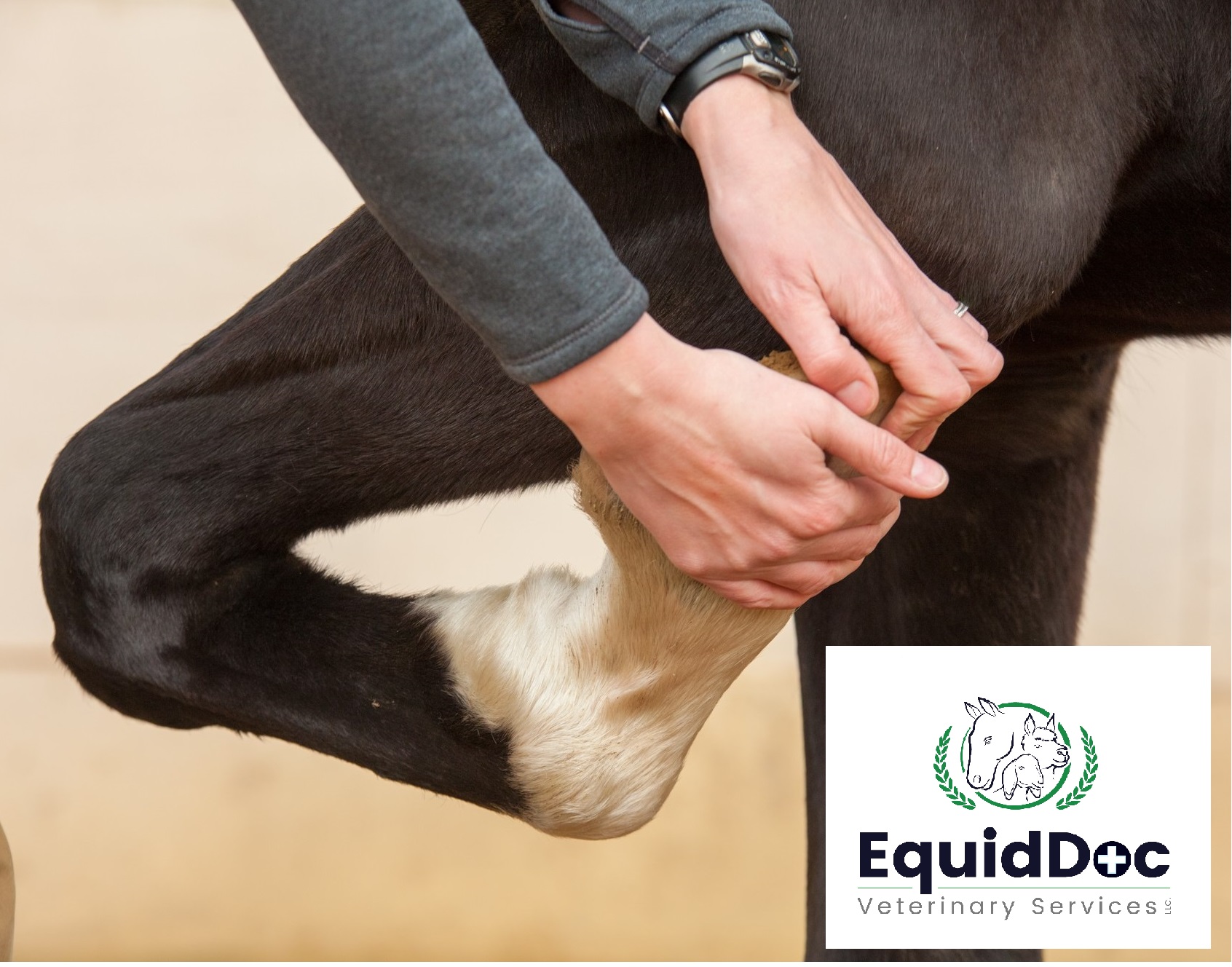With summer comes more time in the saddle, and sometimes a greater opportunity for lameness to develop in your horse. Abnormal gaits caused by musculoskeletal pain are referred to as lameness. Most commonly this appears as a limp on one leg, but lameness can also show up as a shortened stride, inability to maintain a correct lead, or a hampered ability to bend through the hindquarters or top line.
EquidDoc veterinarians are frequently asked to examine a lame horse on the farm in hopes of helping find out where & what is causing the horse’s pain. The veterinarian will always start with a physical exam, followed by a thorough lameness exam. Horses that are significantly lame at the walk may have an abbreviated exam as to not stress the horse or exacerbate his pain. Most commonly, the exam includes watching the horse go in-hand on a straight line, and with the horse lunging at different gaits in both directions, and sometimes under saddle. It is important for the veterinarian to see the horse move in the scenarios where the lameness is most evident.
Once the affected limb(s) are identified the next step is to determine the specific location in the limb that is causing the lameness. The veterinarian will apply hoof testers to the horse’s feet to see if there is pain coming from the hoof. She may also perform flexion tests on the horse to see if an individual joint or set of joints is contributing to the lameness.
Further localization of the lameness with regional anesthesia or nerve blocking might be pursued next. When nerve blocks are used, the veterinarian will inject a small amount of local anesthetic around a nerve in the horse’s leg and a short while later the horse has trotted around again. If the horse becomes sound, then it is determined that the cause of the lameness is located within the region of the limb that has been blocked (or numbed) by the medication. If the horse continues to be lame, then another nerve block is performed above the last. This process starts low in the horse’s foot and continues up the limb until the affected area has been numbed and the horse’s lameness resolves (until the anesthetic wears off).
Also Read: The Scoop on Spring Shots
Localization is important so diagnostics such as x-rays or ultrasound can be used in the localized area to diagnose the specific injury. Having a specific diagnosis allows us to create the best treatment and rehabilitation plan for your individual horse. On the rare occasion that a diagnosis is not able to be made on the farm, advanced testing at a hospital for CT, MRI, or Bone Scan may be required.
If you have a horse with a hitch in his step, call EquidDoc at (508) 885-4205 to schedule your horse’s lameness evaluation today! Have a great ride!

